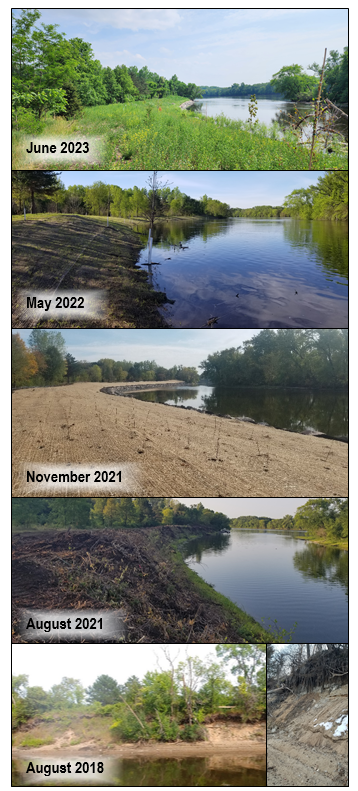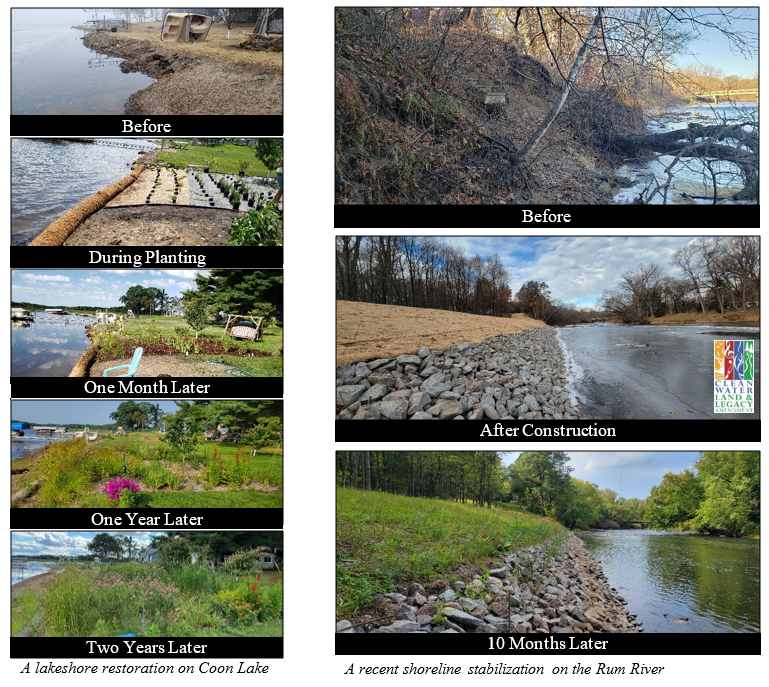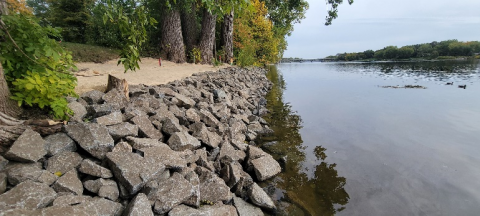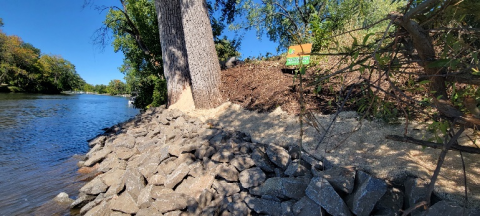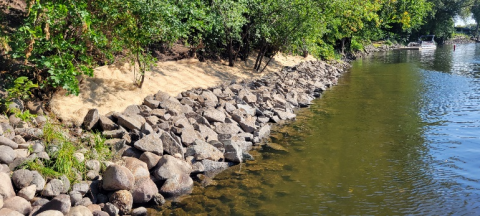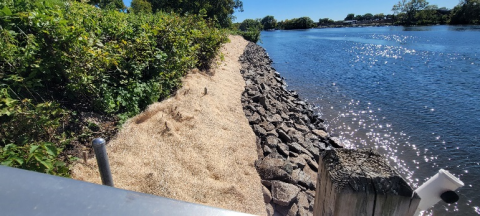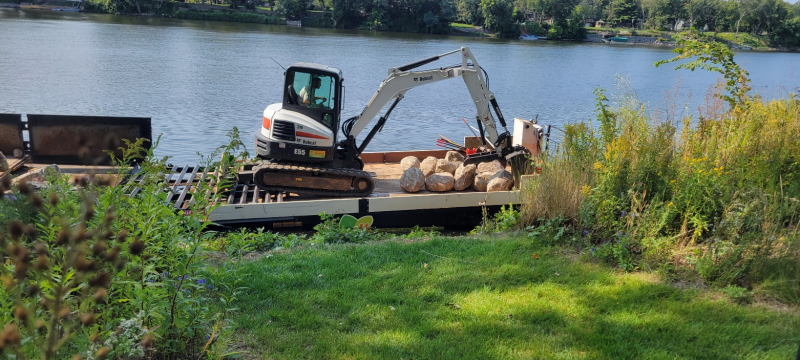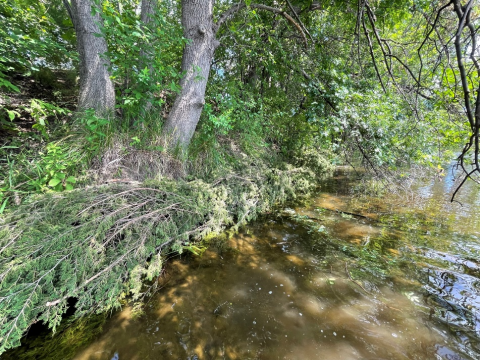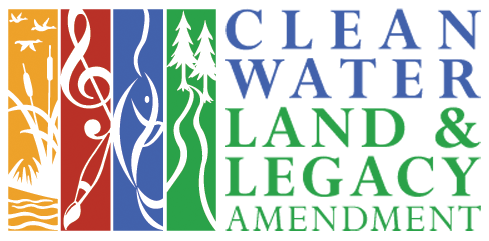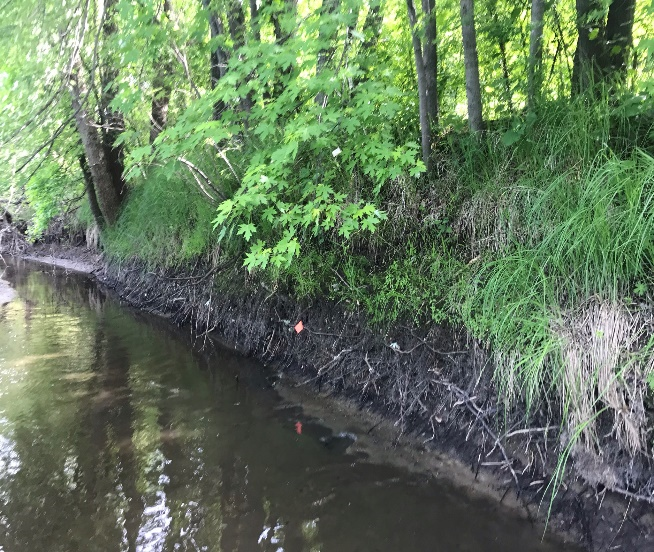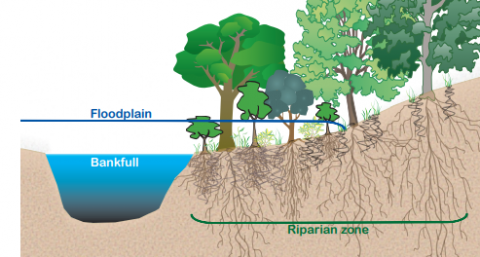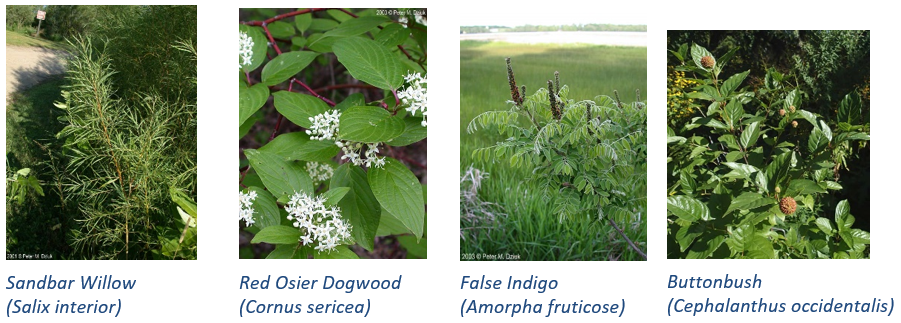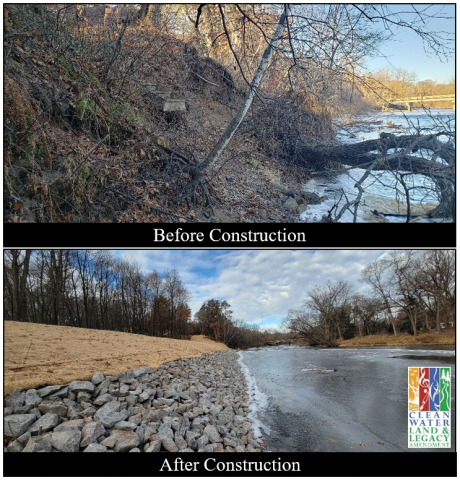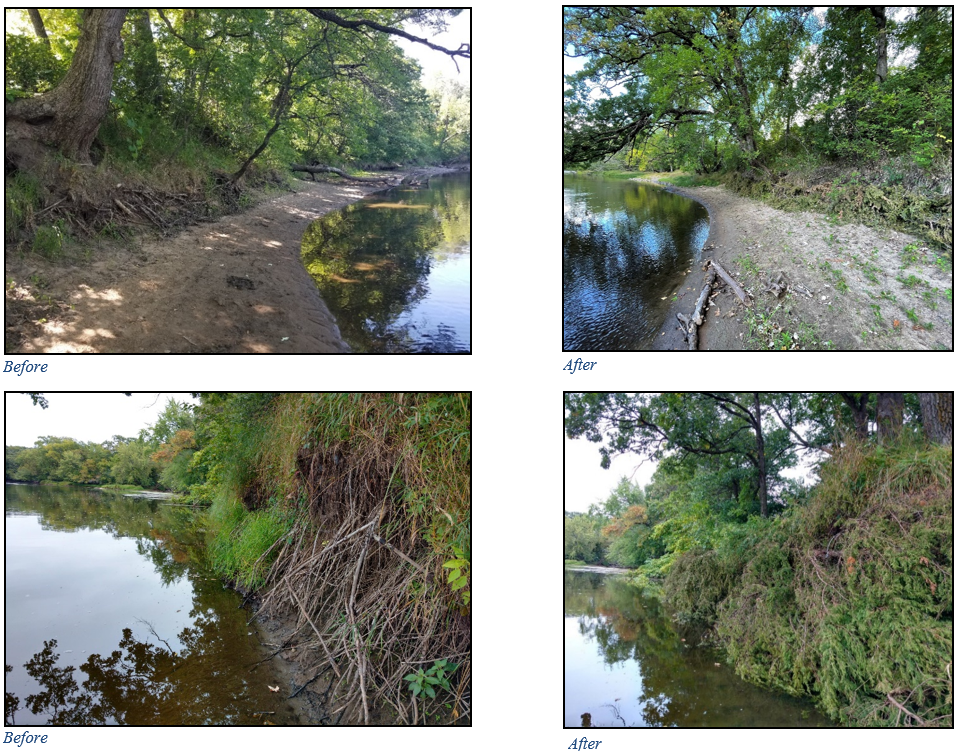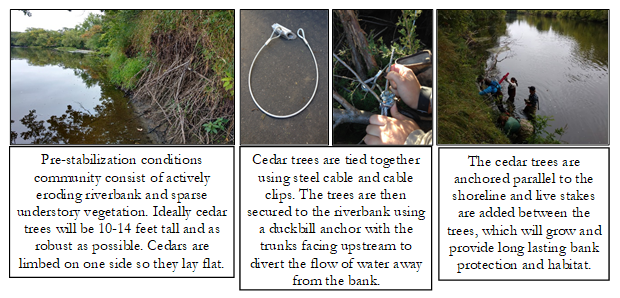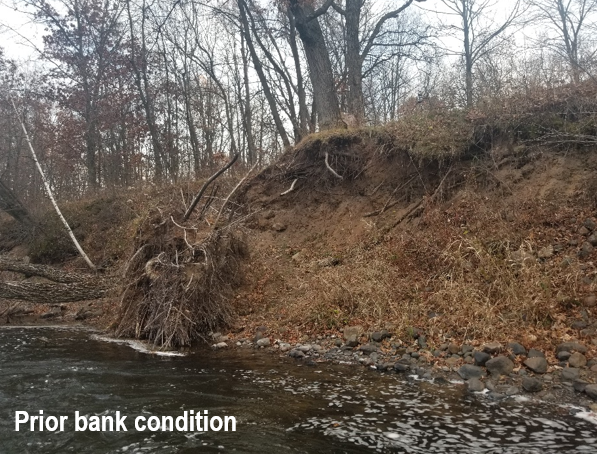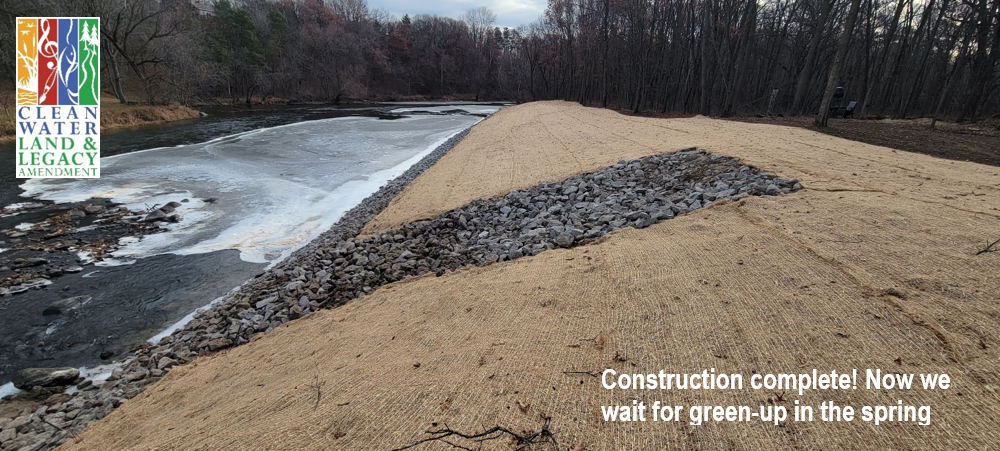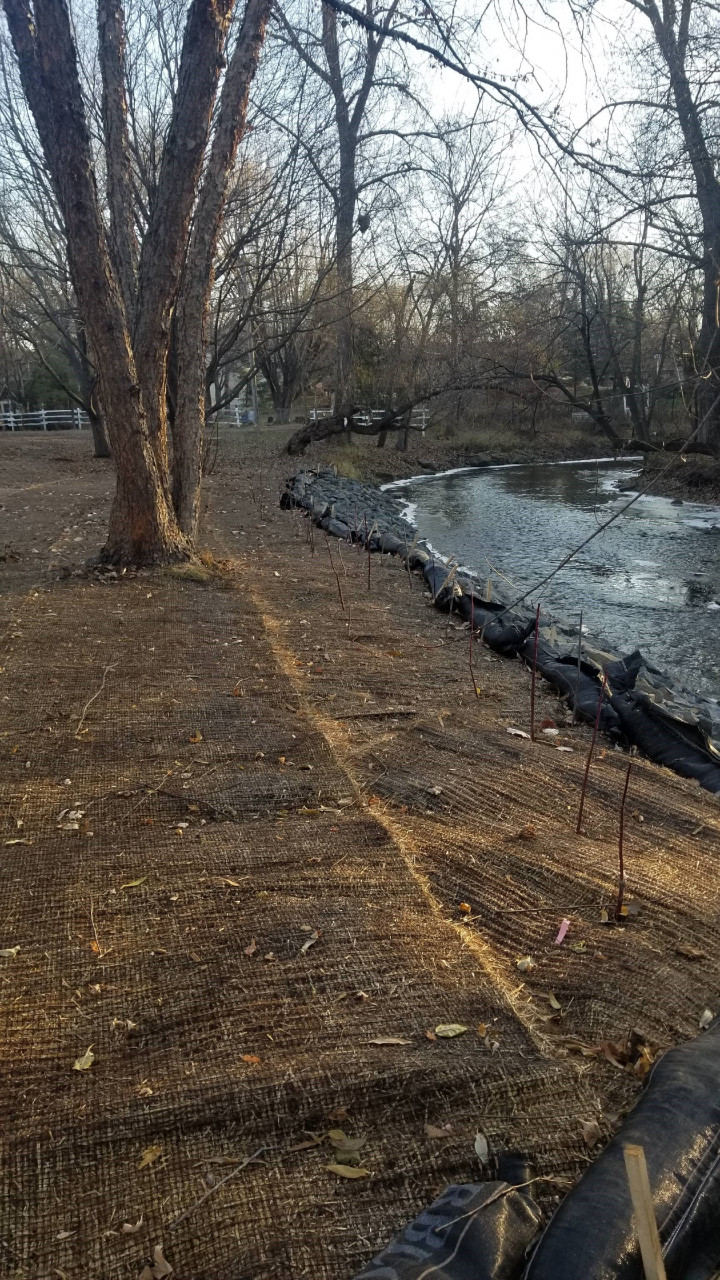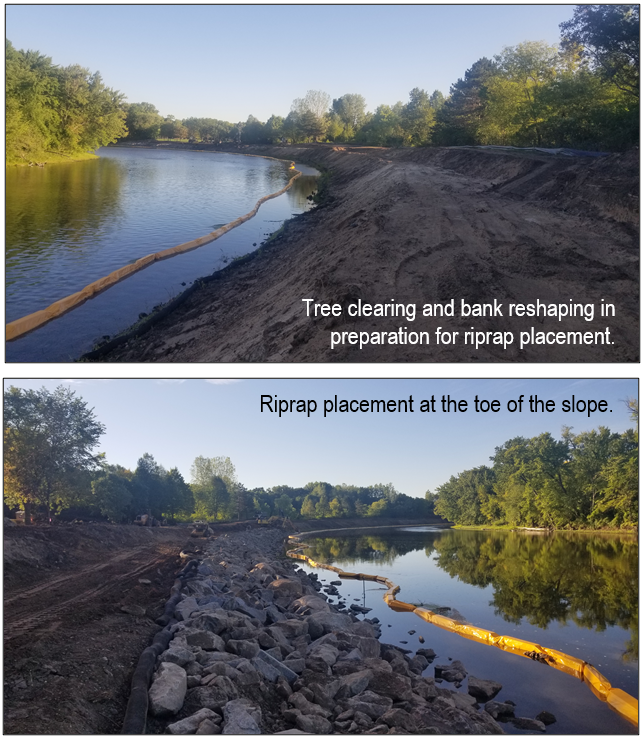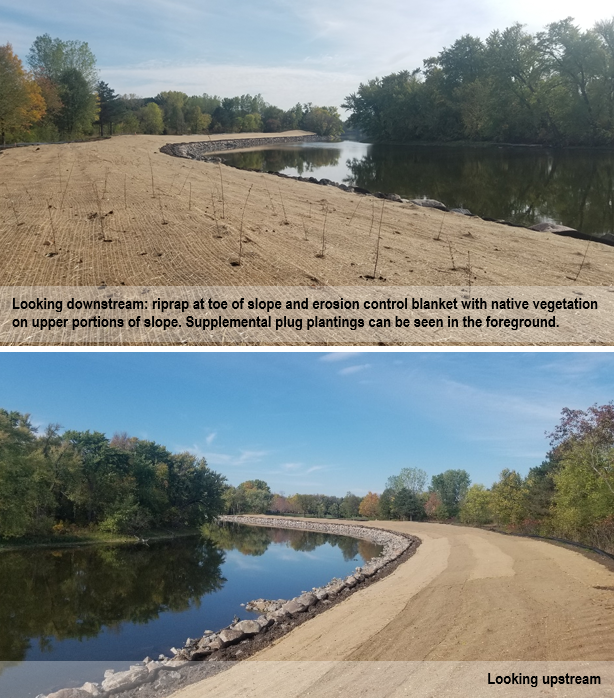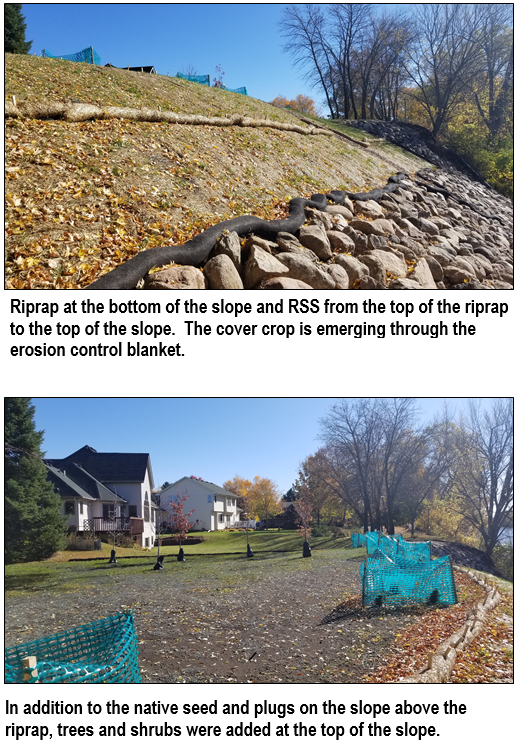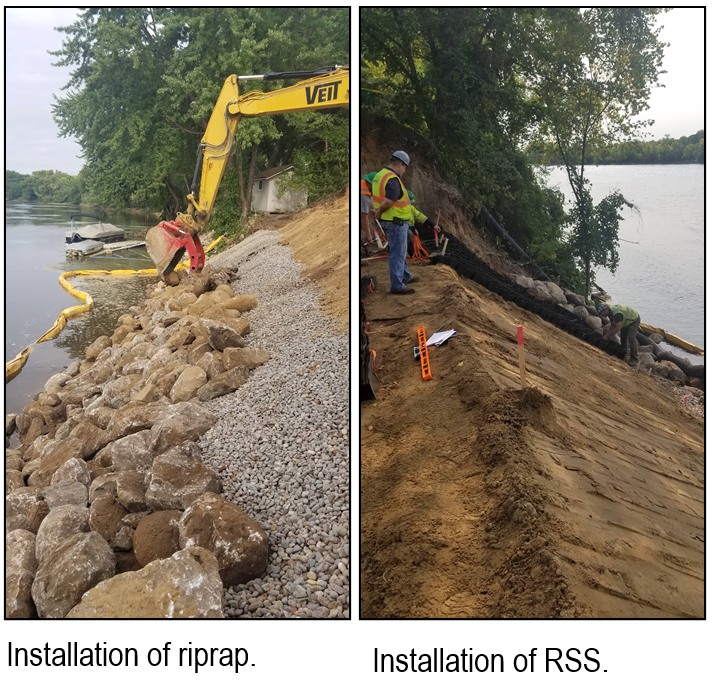ACD has been busy stabilizing severely eroded riverbanks along the Rum River to reduce the load of sediment and nutrients entering the river and to enhance the habitat of the Rum. A large initiative utilizing phases of grant funding from the Clean Water Land and Legacy amendment kicked off after a 2017 erosion inventory highlighted just how much need there was along the Rum River. To date, this initiative has garnered significant local investment beyond the competitive state grant dollars from Anoka County, the Upper and Lower Rum River WMOs, the Cities of Anoka and St. Francis, ACD, and numerous property owners. In 2024, we substantially completed construction for Phase 1 of funding from two competitive state grant sources; the Clean Water Fund (CWF), and the Outdoor Heritage Fund (OHF).
With these funds, along with local match dollars from the all the sources mentioned, we successfully installed the following in 2024:
- 405-feet of articulated concrete toe to normal water levels, with low rock riprap armoring to the two-year flood elevation along some of the highest, steepest, and deepest erosion on the river in Oak Grove (CWF grant funds).
- 115-feet of supplemental rock toe around 40-foot tall bank with toe erosion, susceptible to critical failure in the near future in Oak Grove (OHF grant funds).
- 415-feet of rock toe armoring to a two-year flood elevation with upper banks graded and seeded with native vegetation in Oak Grove, (OHF grant funds). Bank heights ranged from 12-feet to 20-feet with a shear vertical eroded face.
- 400-feet of rock toe armoring to a two-year flood elevation with 225-feet of vegetated reinforced soil slope, and 175-feet of graded upper bank, all of which was seeded to native vegetation in Anoka (OHF grant funds). This bank was approximately 10-feet in height with a paved walking trail actively falling into the river.
- 200-feet of cedar revetment along moderate toe erosion at the Anoka Nature Preserve in Anoka (OHF grant funds). A 550-foot stretch immediately upstream of this segment is planned for a bioengineering project in 2025.








